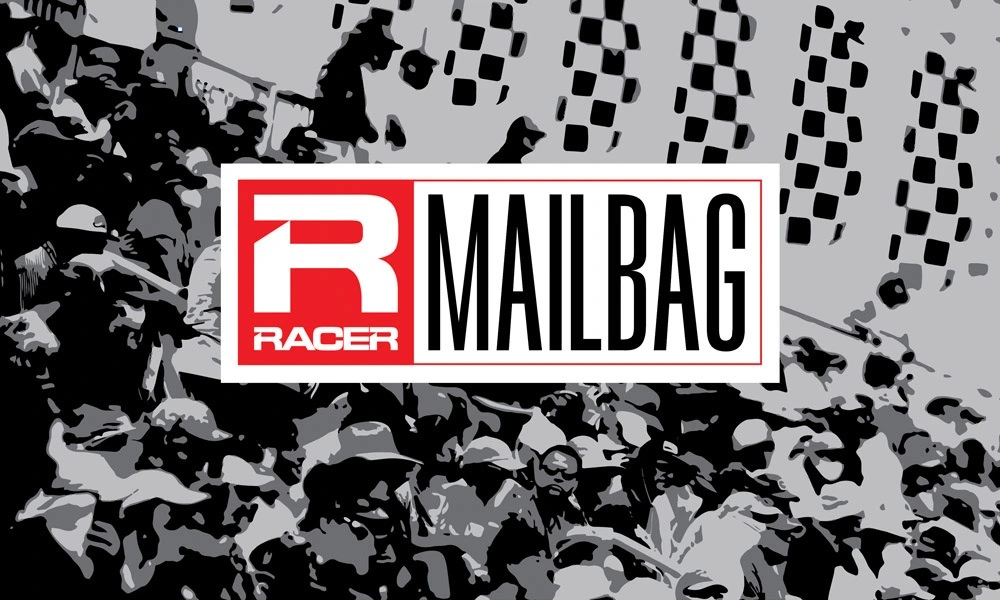Q: Last week Tim Hubbell sent a letter explaining a very fair way for yellows to be handled by IndyCar without too much of complexity or sophistication, and I think this is the fairest, simplest idea in a long time. Your indifferent reaction to it was disappointing. I think this idea needs to be passed onto IndyCar.
Below is Tim’s idea:
“When a full course caution is needed, throw the flag immediately. Give the drivers three seconds (or whatever is reasonable) to engage the pit lane speed limiter, and close the pits only until the leader arrives, giving the leader first chance to pit. Once the leader has entered, or passed the pit entry, the pits would be open for everyone. his keeps the relative gaps until the pit cycle. The pace car would pick up the leader, and the rest of the field, at pit-out, whether or not they pitted.”
Shyam
MP: Well, I do suck. IndyCar reads every Mailbag. The suggestion was received last week by those who might be interested in it.
Q: Formula 1 introduced intermediate tires back in the mid-1990s. Why doesn’t IndyCar Series have intermediate tires in case of light rain?
Therius Oktavio
MP: Because they’d rarely be used and would drive up the cost of each entry’s annual tire lease from Firestone.
Q: Further to discussion about turning left (or right) at oval races, I can offer my first-hand Down Under experience.
Speedways (that’s what we call dirt tracks) in NZ run different directions for different classes of cars, even on the same night. Open-wheelers like midgets and sprint cars run anti-clockwise, but anything based on actual stock street cars runs clockwise.
I believe the rationale is that the (empty) passenger’s side should be closest to the wall, since that’s the side most likely to hit. AUSCAR ran clockwise at the Calder Park Thunderdome, while NASCAR ran anti-clockwise when they visited.
I think what this ultimately points to is that it would be a great idea to get the Thunderdome freshened up and run a Down Under Doubleheader IndyCar weekend: Clockwise on Saturday, anti-clockwise on Sunday.
B, NZ
MP: Thanks, B!

Q: Ed Carpenter should be commended for telling the truth about the gimmicky hybrid system. Ed is correct in his opinion not only as a driver, but as a team owner. This system adds nothing but high cost to the team owners and another unneeded distraction for the drivers. The performance of the cars has not increased enough to overcome the additional weight and the harder tire compounds that are part of the new hybrid package.
Why does IndyCar believe that by agreeing to the hybrid, the manufacturer that threatened to leave won’t leave anyway? There are no guarantees. Manufacturers come and go, and the series should start making decisions based on what is best for all involved, including promoters, team owners, drivers and most importantly the fans. From the outside looking in it appears that Mr. Penske and IndyCar only consider 16th Street. IndyCar should drop the hybrid, reduce car weight, have Firestone go back to pre-2024 tire compounds and go racing!
Michigan Matt
MP: IndyCar let the world of racing change around it, failed to react in a timely manner to those changes, finally gets into the game with a modern powertrain after taking a half-decade to go live with it, and after a heated Ed Carpenter has two extremely bad days and blames the hybrid for everything but war and famine, IndyCar needs to revert to its old and out of touch ways?
If Firestone’s tires degraded as quickly as they did in the past, the hybrid doesn’t get mentioned. Folks leave Iowa talking about yet another great race where drivers on different tire strategies put on a great race, and oh, by the way, it was the first hybrid oval race.
But since those tires didn’t significantly degrade on the new track surface, and since it was a rather boring and processional doubleheader, the hybrid becomes the easy target. And I get it. Hybrids aren’t cool or exciting. But they’re here for a reason, and that’s to help the series in the medium-term. Panicking after two or three races doesn’t help in any way.
Yes, manufacturers do come and go. Except IndyCar only has two, and nobody new was interested in committing for the last 11.5 years when the series wasn’t hybrid. So the series is trying to keep the two it has, and is hoping to attract more after striking out for more than a decade while holding onto its non-hybrid formula. What it was doing before wasn’t working. Trying something different is the smart play.
And if this doesn’t work, it will try something else. But standing still as the world goes by isn’t the answer.
Q: When talking about race control’s officiating at Iowa, what about the full course cautions? Rahal slowed with a mechanical and rolled into the pits; full course caution. Herta did a brief power slide, caught it, continued on, and… full course caution. Canapino spun coming out of the pits, stalled on the track and they waited what seemed like thirty seconds before going to full course caution.
Did IndyCar give any explanation for why they instantly threw the yellow for Herta and Rahal, but delayed for Canapino? Or were the Rahal and Herta incidents just an easy excuse to go full course caution to bring out the sweepers?
Dave
MP: Race control doesn’t voluntarily provide explanations for its actions. It involves requesting information through the series’ communications department, and if they agree, on background, answers are provided. And since we’re now well past Iowa, and past Toronto, I’ll save my requests for something in the future.
